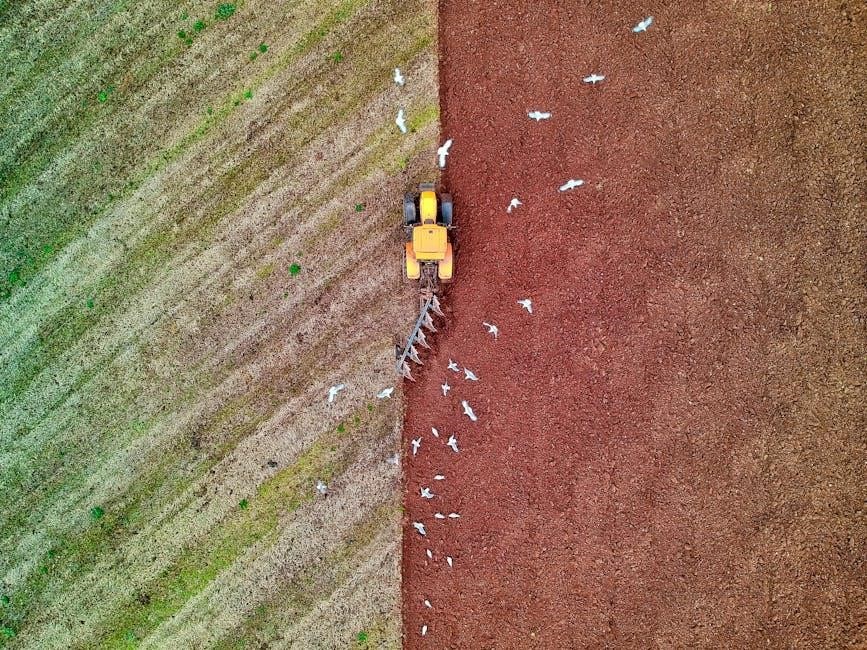The Birds Aren’t Real movement is a satirical conspiracy theory suggesting birds are government surveillance drones. It blends humor, skepticism, and internet culture to critique authority.
Overview of the Conspiracy Theory
The Birds Aren’t Real conspiracy theory posits that the U.S. government replaced all birds with surveillance drones between 1959 and 2001. These drones allegedly mimic bird behavior to spy on citizens. The movement claims over 12 billion birds were exterminated and replaced with advanced robotic replicas. While presented satirically, it reflects broader skepticism toward government surveillance and technological intrusion. The theory has gained traction, particularly among younger generations, blending humor with critiques of authority and modern paranoia.
Historical Context: The Alleged Replacement of Birds with Drones
The theory suggests the U.S. government began replacing birds with drones in the late 1950s, completing the process by 2001. This alleged operation aimed to install surveillance technology across the country. Proponents claim that bird behaviors, like nesting and feeding, were replicated to disguise the drones. The movement often references historical government programs as inspiration, framing the replacement as a covert, large-scale effort to monitor citizens without their knowledge or consent.

The Origins of the “Birds Aren’t Real” Conspiracy
The movement began in 2017, founded by Peter McIndoe and Connor Gaydos, as a satirical critique of government surveillance, sparking widespread debate and internet culture.
Understanding the Satirical Nature of the Movement
The Birds Aren’t Real movement uses satire to critique government surveillance and media distrust. It humorously posits that birds are drones, blending absurdity with societal commentary. By exaggerating conspiracy theories, it highlights modern anxieties about privacy and control. The movement’s viral success lies in its ability to spark debates while entertaining, making it a cultural phenomenon among younger generations seeking creative ways to engage with political skepticism.
Key Players and Founders Behind the Movement
The Birds Aren’t Real movement emerged around 2017, gaining momentum through satirical claims about bird drones. Key figures like Peter McIndoe and Connor Gaydos popularized the theory, blending conspiracy with humor. Their Drone Field Guide book became a symbol of the movement, offering “evidence” and strategies to expose alleged government surveillance. By leveraging internet culture and absurdity, these founders transformed the theory into a viral phenomenon, attracting Gen Z’s skepticism and creativity. Their anonymity adds to the mystery, fueling public intrigue and debate.

Evidence Presented by the Movement
The movement highlights anomalies in bird behavior, such as repetitive flight patterns, and physical traits like uniform sizes and silent wings, as “proof” of drones.
Anomalies in Bird Behavior as “Proof” of Drones
Proponents of the movement point to unusual bird behaviors as evidence of drones. For instance, birds often exhibit repetitive, uniform flight patterns, suggesting programmed movements. Additionally, the lack of observable baby pigeons or irregular feeding habits is cited as suspicious. These anomalies, they argue, align with the idea of machines mimicking nature. Such observations are used to fuel the theory that birds are, in fact, surveillance devices designed to blend seamlessly into the environment while monitoring human activity.
Physical Characteristics of “Bird Drones” Analyzed
Supporters of the theory highlight specific physical traits they believe reveal birds as drones. These include uniformly smooth feathers, identical beak shapes, and lack of visible nesting or baby birds. The absence of molting patterns and consistent wing movements are also cited as evidence. Proponents argue these traits suggest a manufactured origin, with birds appearing more like machines than living creatures. Such observations fuel the narrative that these “birds” are sophisticated surveillance devices designed to blend into nature seamlessly.
Government Motives Behind the Alleged Bird Replacement
The movement claims the U.S. government replaced birds with drones for mass surveillance and data collection, aiming to monitor citizens without detection, reflecting deep distrust in authority.
Surveillance and Data Collection as Primary Objectives
Proponents of the Birds Aren’t Real movement argue that the alleged drone program serves to monitor and collect data on citizens. These drones, disguised as birds, are equipped with cameras and microphones to gather information without detection. The theory suggests that this system allows the government to track individuals’ movements, conversations, and behaviors on a mass scale. By blending into nature, these drones supposedly represent a covert method of surveillance, fueling public distrust in government motives and privacy concerns.
Historical Government Programs and Their Connection to the Theory
The Birds Aren’t Real theory draws parallels with past government surveillance initiatives, such as Operation Mockingbird, which influenced media narratives. Proponents link the alleged bird-drone replacement to Cold War-era programs like MKUltra and COINTELPRO, suggesting a pattern of covert operations. The timeline of 1959-1971, when the supposed bird replacement occurred, aligns with heightened government secrecy and technological advancements. These historical precedents fuel speculation that the government is capable of such large-scale deception, reinforcing the theory’s plausibility among believers.
Implications of the “Birds Aren’t Real” Theory
The theory sparks debates on trust in government, privacy concerns, and societal skepticism, while also highlighting the power of satire in critiquing authority and technology.
Societal Impact and Public Reaction
The “Birds Aren’t Real” movement has sparked widespread debate, blending satire with skepticism. While some view it as a humorous critique of government overreach, others worry about misinformation. Gen Z, in particular, uses the theory to express distrust in institutions. Public reaction ranges from amusement to concern, as the movement highlights the power of internet culture to shape perceptions. It has also inspired community-driven investigations, fostering a mix of entertainment and critical thinking about surveillance and societal trust in authority.
Ethical Considerations and Privacy Concerns
The “Birds Aren’t Real” theory raises significant ethical concerns, particularly regarding privacy and surveillance. If birds were drones, it would imply constant, unchecked monitoring of civilians without consent. This challenges the balance between national security and individual rights. The movement highlights fears of governmental overreach and the potential misuse of technology. While satirical, it sparks discussions about the morality of mass surveillance and the erosion of trust in institutions. These concerns resonate deeply in an era of increasing technological intrusion into daily life.

Identifying “Bird Drones”: A Field Guide
Learn to distinguish “bird drones” from real birds by examining flight patterns, behavior, and physical features. This guide helps you spot surveillance drones masquerading as birds.
Visual Identification Techniques
Identifying “bird drones” involves observing unnatural movements, such as overly smooth flight patterns or lack of feather ruffling. Look for uniform feather textures, as drones often lack natural variations. Check for reflective surfaces or metallic glints, which real birds don’t have. Examine the wings for mechanical joints or repeating patterns. Use binoculars to spot antennae or cameras embedded in the “bird’s” body. Note if the bird avoids water or doesn’t engage in typical behaviors like pecking or nesting. These visual cues can help distinguish drones from real birds.
Behavioral Patterns to Distinguish Drones from Real Birds
Proponents of the Birds Aren’t Real movement highlight specific behaviors they claim reveal drones. These include avoiding water, not engaging in typical foraging, and exhibiting repetitive, mechanical flight patterns. Drones allegedly avoid interactions with humans or other animals, unlike real birds. They also report that “bird drones” often hover motionlessly or follow rigid paths, lacking the erratic movements of real birds. Such observations are used to argue that these entities are surveillance tools rather than living creatures, reinforcing the conspiracy theory.

Technology Behind the “Bird Drones”
The bird drones allegedly use advanced AI, realistic feather mimicry, and silent flight mechanics to blend seamlessly into natural environments while conducting surveillance.
Surveillance Capabilities and Drone Mechanics
The alleged bird drones are equipped with advanced surveillance technology, including high-resolution cameras, microphones, and AI-powered tracking systems. Their mechanics mimic natural bird movements, such as wing flapping and perching, to avoid detection. Solar panels and rechargeable batteries enable continuous operation. These drones reportedly transmit real-time data to government servers, blending seamlessly into ecosystems while monitoring human activity. Their design ensures stealth, with silent flight systems and feather-like exteriors, making them nearly indistinguishable from real birds to the untrained eye.
Counter-Drone Measures and Defense Strategies
To combat alleged bird drones, enthusiasts propose various countermeasures. These include using signal jammers to disrupt communication, deploying physical barriers, or employing AI to detect anomalies in bird behavior. Privacy advocates suggest limiting outdoor Wi-Fi and reducing digital footprints. Others recommend raising public awareness through community workshops. While these strategies are speculative, they reflect a broader distrust in government surveillance and a desire for personal privacy in an increasingly monitored world.
Real-Life Sightings and Testimonials
Many claim to have spotted “bird drones” exhibiting unusual behavior, such as erratic flight patterns or emitting mechanical sounds. A man named John Doe shared his encounter with a “bird” that hovered motionlessly, sparking suspicion. These accounts fuel the movement’s intrigue and debate.
Community Reports and Personal Encounters
Community members share vivid accounts of encountering suspected bird drones, describing unusual behaviors like hovering motionlessly or emitting mechanical sounds. A man named John Doe claimed a “bird” followed him, sparking widespread discussion. These personal stories, often documented in the Birds Aren’t Real Drone Field Guide, highlight the movement’s grassroots appeal and its reliance on anecdotal evidence to fuel suspicion and debate about government surveillance.
Photographic and Videographic Evidence from the Field
Supporters of the Birds Aren’t Real movement often share photos and videos purporting to show bird drones in action. These include images of birds exhibiting mechanical behaviors, such as hovering motionlessly or displaying unnatural patterns. Videos capture alleged drones malfunctioning or revealing internal components. Such visual “evidence” is compiled in the Drone Field Guide, serving as a central resource for identifying and documenting suspected surveillance birds. These visuals fuel public debate and skepticism, reinforcing the movement’s claims of government deception.
The Birds Aren’t Real movement highlights societal skepticism and distrust in authority; While satirical, it sparks important conversations about privacy and surveillance. Stay informed, question the norm, and remain vigilant—truth is often hidden in plain sight.
Reflecting on the Movement’s Significance
The Birds Aren’t Real movement underscores societal distrust in authority, blending satire with conspiracy to critique government surveillance. While humorous, it reflects Gen Z’s skepticism toward institutions. By questioning reality, it challenges perceptions of privacy and control. This phenomenon highlights how internet culture amplifies unconventional ideas, sparking debates on truth and transparency. Its significance lies in its ability to inspire critical thinking and foster dialogue about trust in modern governance.
Encouraging Further Investigation and Awareness
The Birds Aren’t Real movement encourages critical thinking and skepticism, urging individuals to question reality. By sharing knowledge and resources, it fosters awareness about surveillance concerns. The field guide serves as a tool to identify supposed drone behavior, empowering people to investigate. Joining the movement means spreading the truth and challenging authority. Stay vigilant, document anomalies, and contribute to the conversation about privacy and control in a surveillance-driven world.

